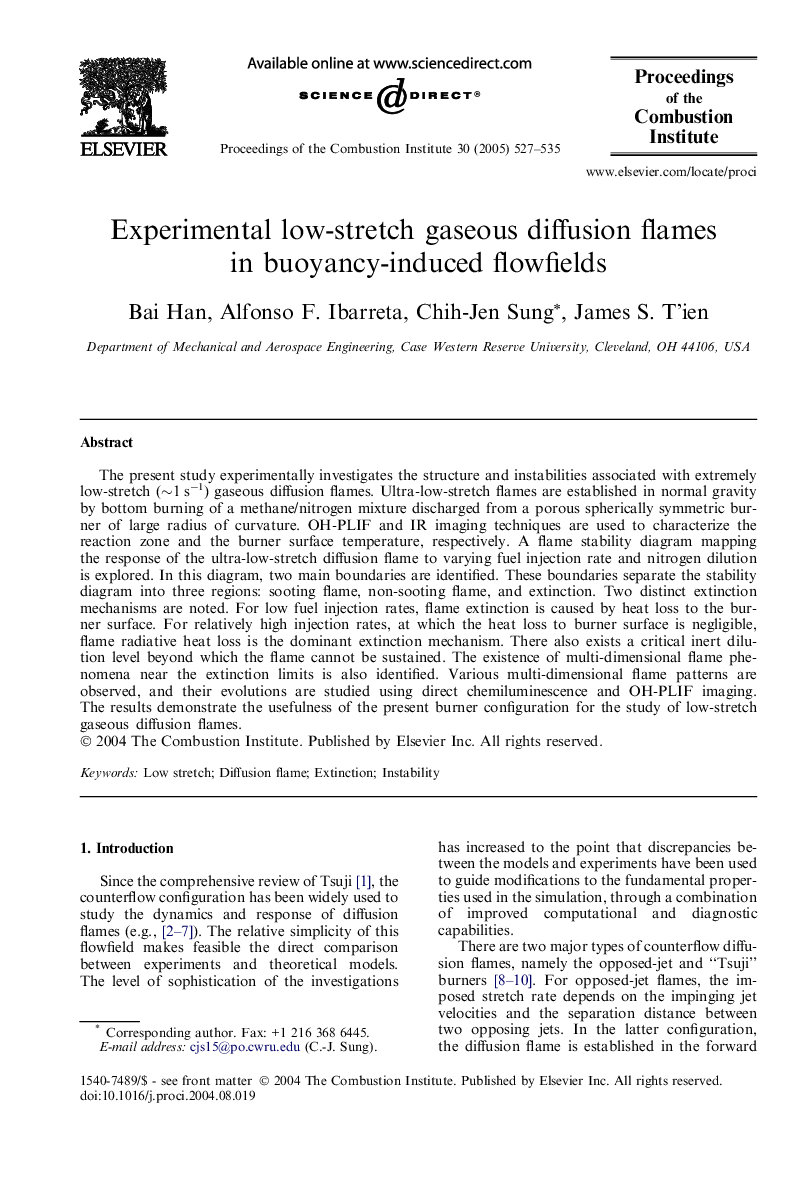| Article ID | Journal | Published Year | Pages | File Type |
|---|---|---|---|---|
| 9637374 | Proceedings of the Combustion Institute | 2005 | 9 Pages |
Abstract
The present study experimentally investigates the structure and instabilities associated with extremely low-stretch (â¼1Â sâ1) gaseous diffusion flames. Ultra-low-stretch flames are established in normal gravity by bottom burning of a methane/nitrogen mixture discharged from a porous spherically symmetric burner of large radius of curvature. OH-PLIF and IR imaging techniques are used to characterize the reaction zone and the burner surface temperature, respectively. A flame stability diagram mapping the response of the ultra-low-stretch diffusion flame to varying fuel injection rate and nitrogen dilution is explored. In this diagram, two main boundaries are identified. These boundaries separate the stability diagram into three regions: sooting flame, non-sooting flame, and extinction. Two distinct extinction mechanisms are noted. For low fuel injection rates, flame extinction is caused by heat loss to the burner surface. For relatively high injection rates, at which the heat loss to burner surface is negligible, flame radiative heat loss is the dominant extinction mechanism. There also exists a critical inert dilution level beyond which the flame cannot be sustained. The existence of multi-dimensional flame phenomena near the extinction limits is also identified. Various multi-dimensional flame patterns are observed, and their evolutions are studied using direct chemiluminescence and OH-PLIF imaging. The results demonstrate the usefulness of the present burner configuration for the study of low-stretch gaseous diffusion flames.
Keywords
Related Topics
Physical Sciences and Engineering
Chemical Engineering
Chemical Engineering (General)
Authors
Bai Han, Alfonso F. Ibarreta, Chih-Jen Sung, James S. T'ien,
